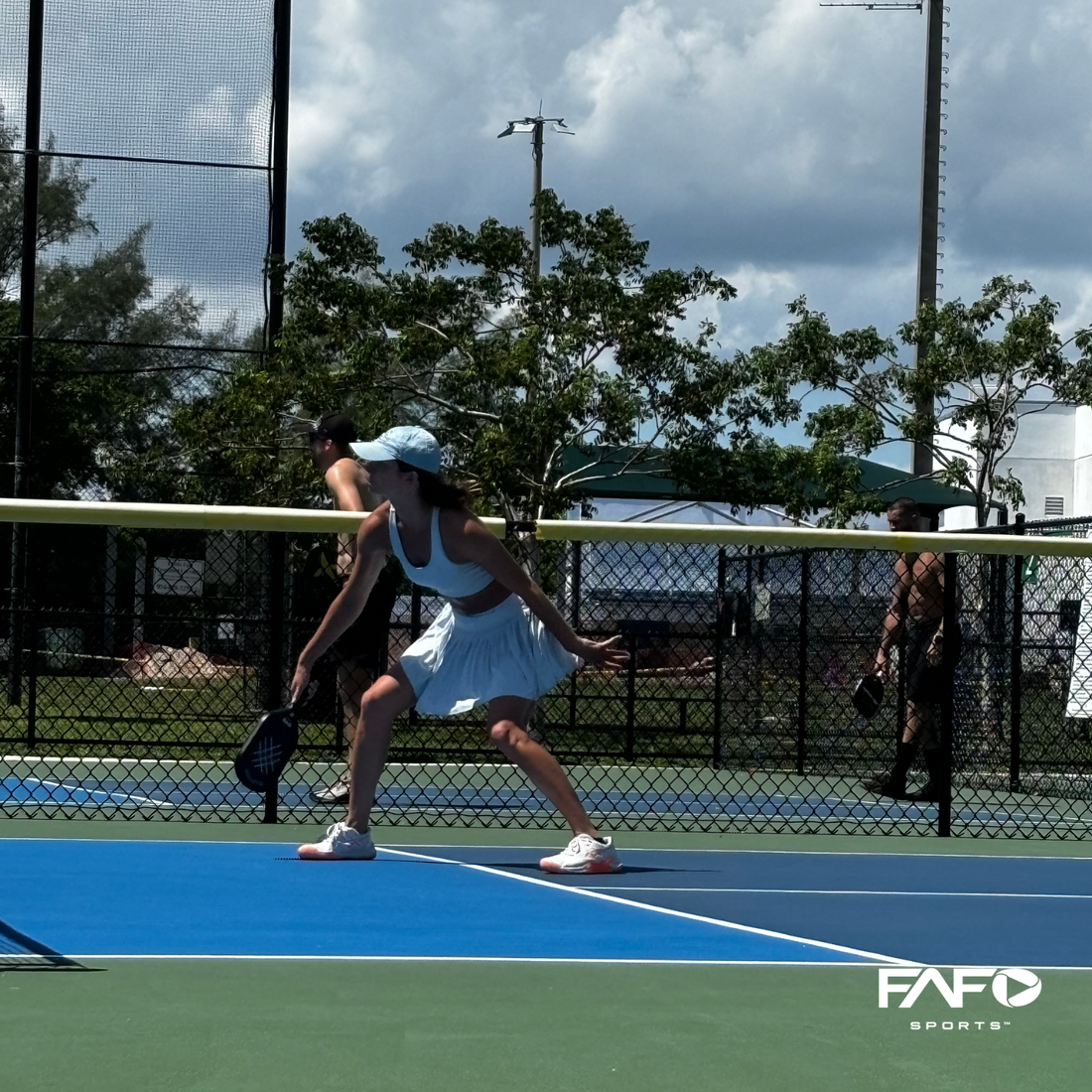
What Is an Ace in Pickleball? How to Serve It Like a Pro
Share
Pickleball has rapidly gained popularity across the world, becoming one of the fastest-growing sports for players of all ages. It combines elements of tennis, badminton, and table tennis, played on a smaller court, making it accessible yet competitive. One of the key plays that can turn the tide of a match is an ace. But what exactly is an ace in pickleball, and how can you master it to outplay your opponents?
In this article, we dive deep into the concept of an ace in pickleball and provide detailed insights on how you can serve an ace with precision and consistency.
What Is an Ace in Pickleball?
An ace in pickleball refers to a serve that lands within the correct service area and is not returned by the receiving player, earning the server a point outright. The receiver either misses the ball entirely or fails to make a legal return, making the ace one of the most powerful weapons in a pickleball player’s arsenal.
In essence, an ace showcases both skill and strategy, putting the server in a dominant position right from the start of a rally. Not only does it score a point, but it also disrupts the receiver's rhythm, creating an immediate psychological advantage.
Why Is an Ace Important in Pickleball?
An ace in pickleball can significantly influence the flow of the game. Here’s why:
- Direct Point: Scoring an ace means an instant point with minimal effort, which can be a game-changer during crucial moments.
- Psychological Advantage: A well-placed ace can demoralize opponents, disrupting their focus and forcing them to second-guess their receiving position.
- Momentum Shift: Consistently serving aces can shift momentum in your favor, allowing you to control the pace of the game.
- Reduced Fatigue: With an ace, you don’t have to engage in a long rally, saving energy for the rest of the match.
How to Serve an Ace in Pickleball
Now that you understand the importance of an ace, let’s break down the steps to serve an ace effectively. Whether you’re a beginner or a seasoned player, mastering the following techniques will improve your chances of delivering a winning serve.
1. Perfect Your Stance and Grip
Before you even think about the serve itself, your stance and grip are critical. A stable stance provides balance and control, while the right grip ensures that you can direct the ball with power and accuracy.
- Stance: Stand with your feet shoulder-width apart, knees slightly bent, and weight balanced between both feet. Your dominant foot should be positioned slightly behind your non-dominant foot for optimal power.
- Grip: Use a continental or eastern grip. These grips allow for better control over spin and power. Make sure your grip is relaxed but firm.

2. Focus on Your Toss
An effective ace begins with a well-controlled toss. The toss should be consistent and in the same spot every time to avoid telegraphing your serve to the opponent.
- Height of the Toss: The toss should be just high enough for you to comfortably strike the ball at waist level, as per the pickleball serving rules. A toss too high or too low can throw off your timing.
- Placement: Aim to toss the ball directly in front of your hitting shoulder, ensuring that it falls in line with your swing for optimal power and placement.

3. Master the Types of Serves
In pickleball, there are several different types of serves that can result in an ace. Each has its own advantages, and understanding when to use them can improve your chances of scoring an ace.
- The Power Serve: This serve is all about speed and aggression. A power serve hit deep into the service area can overwhelm your opponent, giving them little time to react. To execute, focus on a strong, fast swing with minimal spin.
- The Topspin Serve: Adding topspin to your serve makes the ball dive sharply after it crosses the net, causing it to bounce higher. This can catch your opponent off guard, making it difficult for them to return.
- The Slice Serve: A slice serve curves sideways, often pulling the receiver out of position. This serve is particularly effective when targeting the sidelines, creating angles that are hard to counter.
- The Lob Serve: A high, arching lob serve may not be as fast, but its high trajectory can confuse opponents and force a weak return or no return at all, leading to an ace.
4. Target Weaknesses in Your Opponent
A well-executed ace often comes from targeting your opponent’s weaknesses. Observe their stance, positioning, and overall skill level to exploit gaps in their defense.
- Target the Backhand: Many players struggle with returning serves to their backhand. Aiming your serve toward their backhand side increases the likelihood of scoring an ace.
- Use Angles: Serving at sharp angles can pull your opponent wide off the court, making it harder for them to reach the ball in time.
- Change Up Speeds: Varying the speed of your serves keeps your opponent guessing, making it more difficult for them to anticipate and return the ball.
5. Practice, Practice, Practice
Like any skill, serving an ace in pickleball requires consistent practice. Focus on perfecting your technique and developing muscle memory, so your serve becomes a natural and powerful tool in your game.
- Drills for Accuracy: Set up target zones within the service area and practice hitting those zones repeatedly.
- Serve Under Pressure: Simulate game situations where you need to land an ace to score a critical point. Practicing under pressure will help you stay calm and focused during real matches.

Common Mistakes to Avoid When Serving
Even experienced players can make mistakes when serving. Avoiding these common errors will increase your chances of landing a successful ace.
- Overhitting the Ball: Trying to serve with too much power can result in overhitting the ball out of bounds. Focus on control rather than sheer strength.
- Illegal Serves: Remember that pickleball has strict serving rules, such as the underhand motion and contacting the ball below waist level. Failing to adhere to these rules will result in a fault.
- Telegraphing Your Serve: If you always serve the same way, your opponent will eventually catch on. Vary your serves to keep them on their toes.
Conclusion
Mastering the ace in pickleball takes time, precision, and strategic thinking. By perfecting your serve technique, targeting your opponent’s weaknesses, and practicing regularly, you can turn the ace into a powerful weapon that consistently wins points and dominates games. Whether you're a recreational player or aiming for competitive success, the ace will set you apart as a skilled and strategic pickleball player.
Visit FAFO Sports at FAFO Sports and discover our wide range of high-quality Paddles & Paddle equipments.
Follow us on
Tiktok
